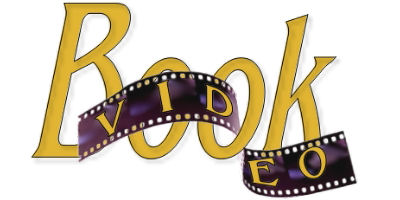 Best-selling author of The Legacy of the King's Pirates series, MaryLu Tyndall writes full time and makes her home with her husband, six children, and four cats on California's coast. Her passion is to write page-turning, romantic adventures that not only entertain but expose Christians to their full potential in Christ. For more information on MaryLu and her upcoming releases, please visit her website at http://www.mltyndall.com. |
|
Creating a Book Trailer Using Windows Movie Maker for Techo-Challenged Authors |
 The Falcon And The SparrowThe Restitution |
I know the consensus isn’t out yet on the marketing value of Book Trailers, but I simply love them. I love watching other authors’ trailers, and I love making them for my own books. There’s nothing more exciting for an author than to see his or her characters come to life on the screen. And since most of us will never see that happen on the big screen, well, why not the little screen? Especially since they are so easy to make! Just follow these ten simple steps: 1. Find royalty-free photos on the Internet. Do a Google search using “Royalty Free Photos” and you’ll get a number of hits. The site I use the most is IStock. Search carefully for the right photos to match your storyline. These photos cost money, but they aren’t too expensive. 2. Find royalty-free music the same way as above. The site I use is http://www.neosounds.com/. You can specify what type of mood you want to portray and it will give you a list of sound clips to listen to and choose from. A bit more expensive than the photos, but not too bad. 3. Open Windows Movie Maker. On the left-hand side bar under “Capture Video” click on Import Pictures and select all the pictures you purchased in Step one. Then click on Import Audio or Music and bring in your music. 4. Now you’re ready to create your trailer. Simply drag each picture down to the long filmstrip at the bottom (where it says Video) in the order you want the pictures to appear in your trailer. And then drag the music you purchased down to the Audio/Music strip beneath it. To see what you’ve created, click on the PLAY button on the tiny screen on the right-hand side. 5. Add transitions and effects. This is the fun part. Under “Edit Movie” on the left-hand tool bar, you see View Video Effects and View Video Transitions. These items will make your trailer sing. Space doesn’t permit to go into detail here on each one, but I suggest you click on them and play around with all the options. To try out a video effect, simply choose one and drag and drop it down to the photo you want to test it on. For a transition, drag and drop it down to the transition line. 6. Add titles. Click on Make Titles or Credits and it will ask you where you want the title placed. It gives you a place to enter it, then choose font, color, and animation. 7. Play your video. You can stop and see what you’ve done by clicking on the PLAY button on the screen at the right. Don’t forget to save your trailer often. 8. Polish it up. Remember, if your sound clip isn’t as long as your video, you can drag it and make it longer. Also, you can add sound effects to your music by simply overlaying the sound effects file on top of your music, as I did in my Restitution Book Trailer. For some great free sound effects, try this site: http://www.soundboard.com/. You can also add a narrating voice for your trailer and drag it to the Audio line in your film strip, but I haven’t tried that one yet! And you can stretch your photos to make them display for longer or shorter times. Just experiment and have fun! 9. Create your movie. Go to File and click Save Movie File. Save your movie in My Computer, click Next, name your movie, and save it in My Videos. When it asks you how large your movie file will be, click Other Settings and then choose Video for Broadband (340 KBPS). 10: Upload your Movie. Step 9 created a file in your My Videos folder with the file extension of WMV. You can upload this file to YouTube and pull the HTML code from that to display on your Web site or blog, or if you have the software on your Web site to play a WMV file, you can do that instead. That’s it! |







